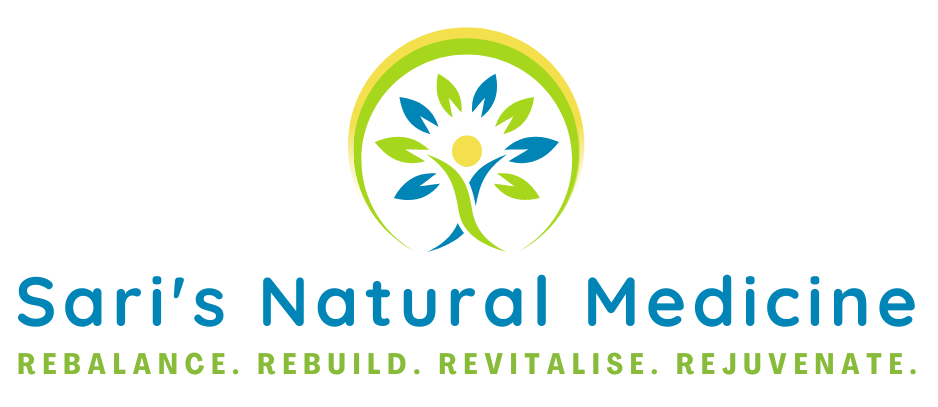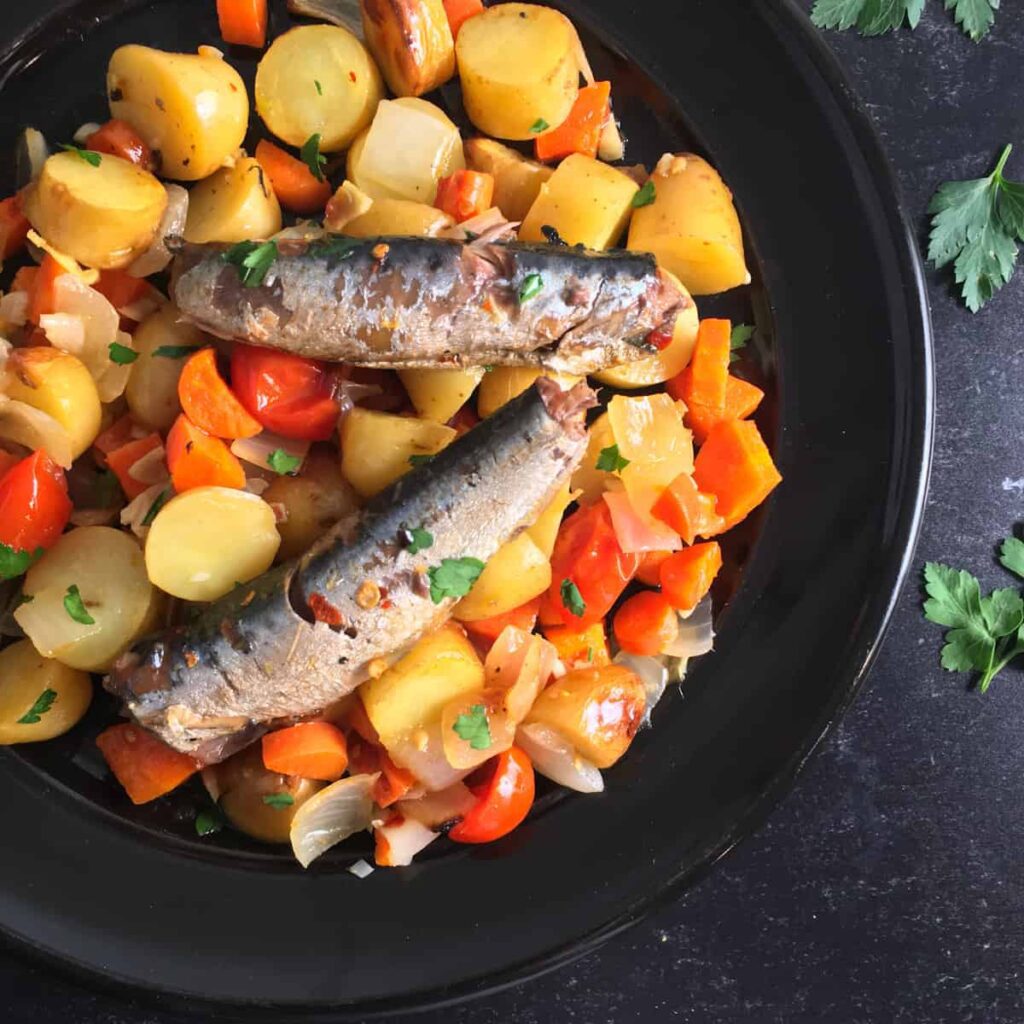Once we have identified that you are a Fast Oxidiser, it is time to start nourishing your body with the goodness it needs to heal and thrive. The closer you follow this diet, the quicker you will heal, increase your sense of calm and relaxation and feel your best. Change your diet slowly to meet these guidelines. Follow the Fundamentals Challenge to make the changes slowly and sustainably. If you try to make the changes too quickly, you are likely to feel overwhelmed and give up. For children on the Fast Oxidiser diet, reduce portions as required for their size. Most children are naturally Fast Oxidisers and will thrive if given the correct fuel from their diet.
The four food groups for fast oxidisers
The four food groups to include in your Fast Oxidiser diet include:
- Cooked vegetables
- Protein
- High quality fats
- Complex whole carbohydrates
This does not include simple carbohydrates (white flour products, fruits and sugars), or chemicalized fast foods.
Percentages of foods to eat daily for fast oxidisers

- 70% variety of cooked vegetables- 3-4 times daily (2/3 of plate)
- 15% high quality fats and oils (2tbsp of quality fat or oil three times daily)
- 10% protein- mainly animal origin.
- 5% or less complex carbohydrates- brown rice, millet, quinoa, amaranth etc.
- 0% simple carbohydrates- fruit, fruit juice, honey, maple sugar, agave nectar, other sugars and all other sweets.
- 0% chemicalised and fast foods, junk foods, artificial sweeteners, stevia etc.
To put it another way, imagine a plate of food that represents your entire days’ worth of food. The amounts of vegetables, protein, carbohydrates and fats can be visibly divided to look like this:
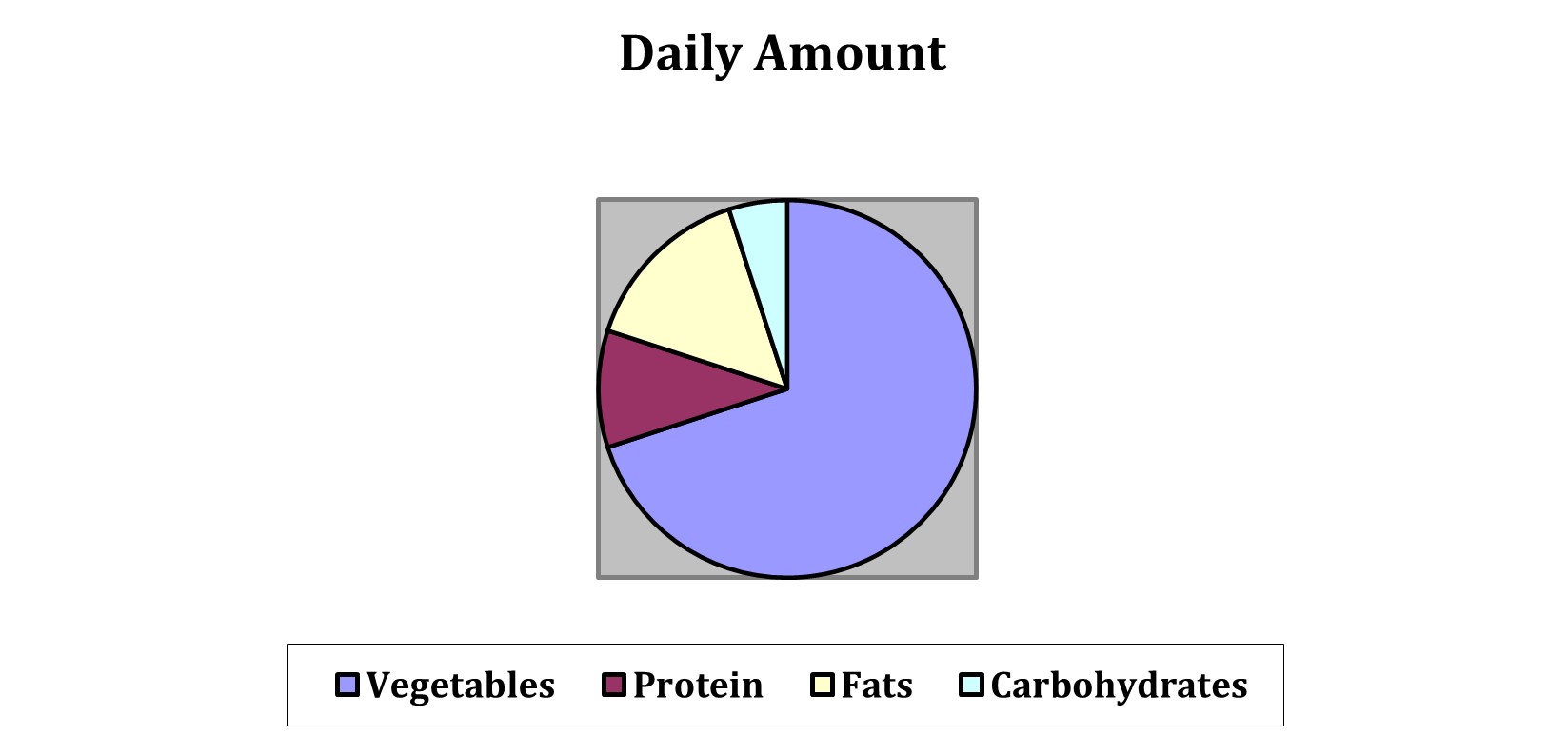
Vegetables represent 70% of your entire day intake. This is around 2/3.
Fats represent 15% of your entire day intake. This is around 1/6.
Proteins represent 10% of your entire day intake. This is more than 1/12.
Carbohydrates represent 5% of your entire day intake. This is less than 1/12.
It isn’t always practical to divide each meal into these 4 groups. It is better to have protein in one meal, and carbohydrates in another meal, trying to keep the carbohydrates and the protein separate where possible. This helps with digestion.
Fast oxidiser breakfast
Breakfast could look more like this:
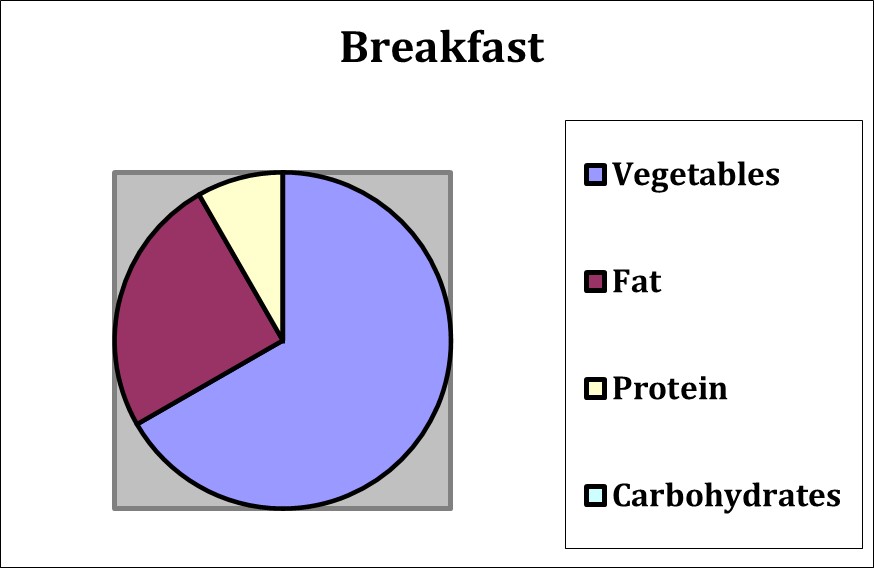
Your plate for breakfast could include:
- cooked vegetables (blue- 2/3 or 8/12 of your meal)
- coupled with great quality fats (red- ¼ or 3/12 of your meal)
- coupled with protein (beige 1/12 of your meal).
Example meals for breakfast that meet these guidelines:
- Cooked silver-beat, with 2 eggs (eggs are both heavy in protein and fats) with 3 tbsp organic butter mixed through at the end.
- Roasted vegetables with 1 can of sardines (sardines are both heavy in protein and fats) with 3 tbsp organic olive oil drizzled on top at the end.
Always add the 2 tbsp fat at the end so it does not cook and go rancid.
Fast oxidiser lunch
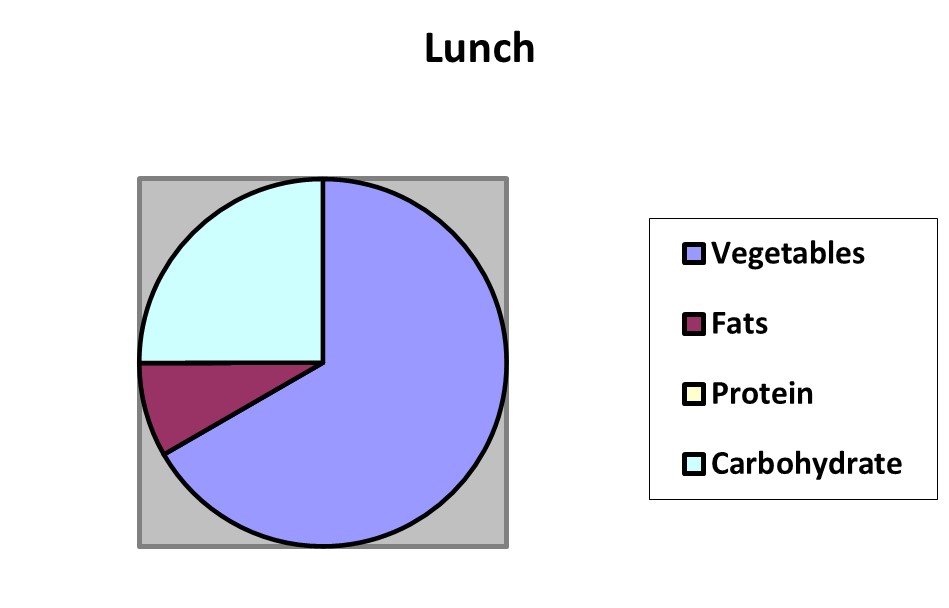
Your plate for lunch could include:
- Cooked vegetables (blue- 2/3 or 8/12 of your meal)
- coupled with great quality fats (red- 1/12 of your meal)
- coupled with complex carbohydrates (green- 3/12 of your meal).
Example meals for lunch that meet these guidelines:
You can use left-over dinners (without the meat) and then add the carbohydrate, such as in these examples.
- Left-over Vegetable casserole with quinoa/rice and 1 tbsp organic cream
- Left-over Stir-fry vegetables with rice noodles and 1 tbsp organic cheese
- Left-over Vegetable curry with quinoa and 1 tbsp organic olive oil
- Left over vegetables mixed through some GF pasta with 1 tbsp yoghurt.
Fast oxidiser dinner
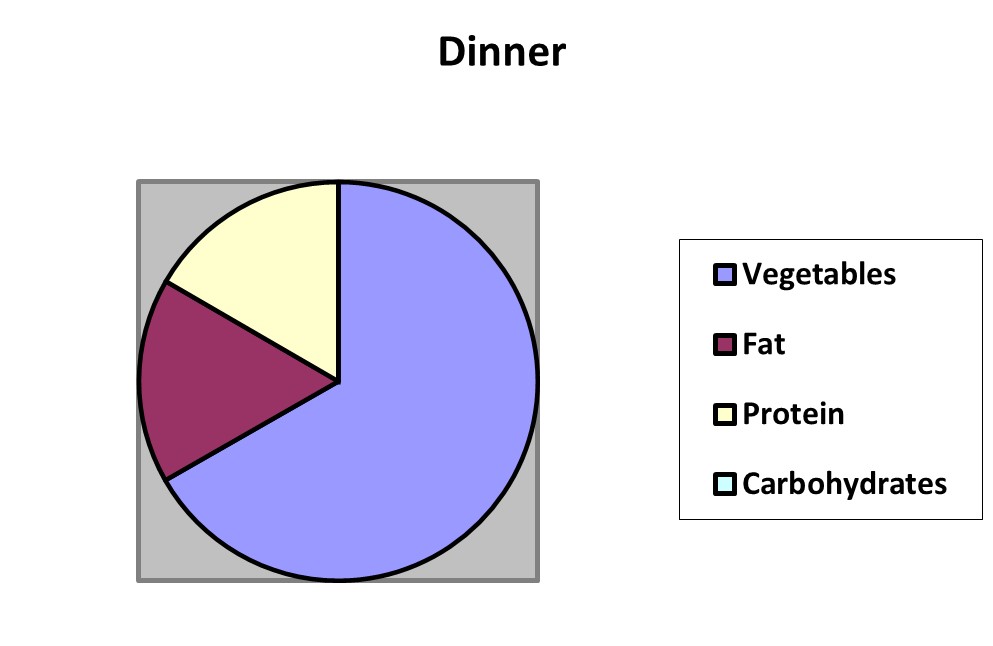
Your plate for dinner could include:
- cooked vegetables (blue- 2/3 or 8/12 of your meal)
- coupled with great quality fats (red- 2/12 of your meal)
- coupled with protein (beige- 2/12 of your meal).
Example meals for dinner that meet these guidelines:
- Vegetables and Lamb/beef/chicken casserole and 2 tbsp olive oil
- Stir-fry vegetables and beef/chicken and 2 tbsp cream
- Lamb/beef/chicken rissoles with vegetables and 2 tbsp yoghurt
- Lamb chops/ beef steak/ chicken drumsticks or wings and vegetables and 2 tbsp added cheese
- Roast lamb/beef/chicken with vegetables and 2 tbsp olive oils
- Lamb/beef/chicken and vegetable curries and 2 tbsp cream
To enable you to choose your own meals, each food group is discussed next.
1. Vegetables
You should aim to eat two thirds (2/3) of your daily diet as cooked vegetables. This large amount is needed to supply hundreds of nutrients no longer found in our food in large quantities. Another way to think of it is including 2-3 cups of cooked vegetables three times daily- depending on your size. Very few people eat anywhere near enough cooked vegetables to enable them to heal and thrive.
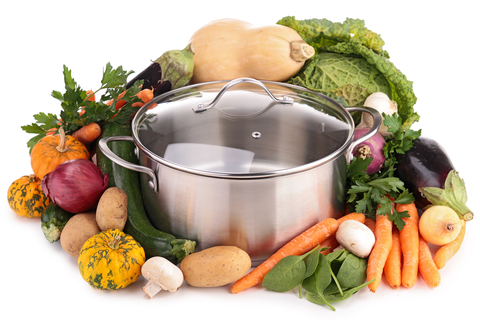
The vegetables must be cooked (keep salads/ raw foods to a minimum). Your body cannot absorb enough minerals from salads as the cooking actually breaks down the fibres in the vegetables and unlocks the minerals for your absorption.
You can choose to have really basic meals on the fast oxidiser diet, such as one or two vegetables with a protein. A bowl of steamed cauliflower with sardines is a winner in our home. A bowl of steamed peas with runny eggs is another regular breakfast in our home. Or you can choose to make lovely curries with lots of spices. The choice is yours.
Try to eat a variety of vegetables. There are so many with different flavours and textures. There is a whole world of fun awaiting you.
Eat some of each of the following groups daily:
- Root vegetables (carrots, onions, turnips, rutabagas, parsnips)
- Cruciferous vegetables (broccoli, cauliflower, cabbage, Brussels sprouts)
- Dark greens (spinach, Swiss chard, silver beat, turnip greens, mustard greens, kale, bok choy)
Only eat the following vegetables occasionally and not every day. These are not as healthful.
- mushrooms, artichokes, okra, summer squashes and nightshades
- Nightshades include: tomatoes, potatoes, eggplant, capsicum and peppers. Nightshades are irritating to the body, somewhat toxic, and very yin, although using a little cayenne pepper spice is good.
Avoid canned vegetables, canned soups, or spoiled or old vegetables that are not fresh. However, canned vegetables are better than no vegetables at all.
For much more information on vegetables and how to incorporate them into your daily life, sign up to the Fundamentals Challenge.
2. Proteins
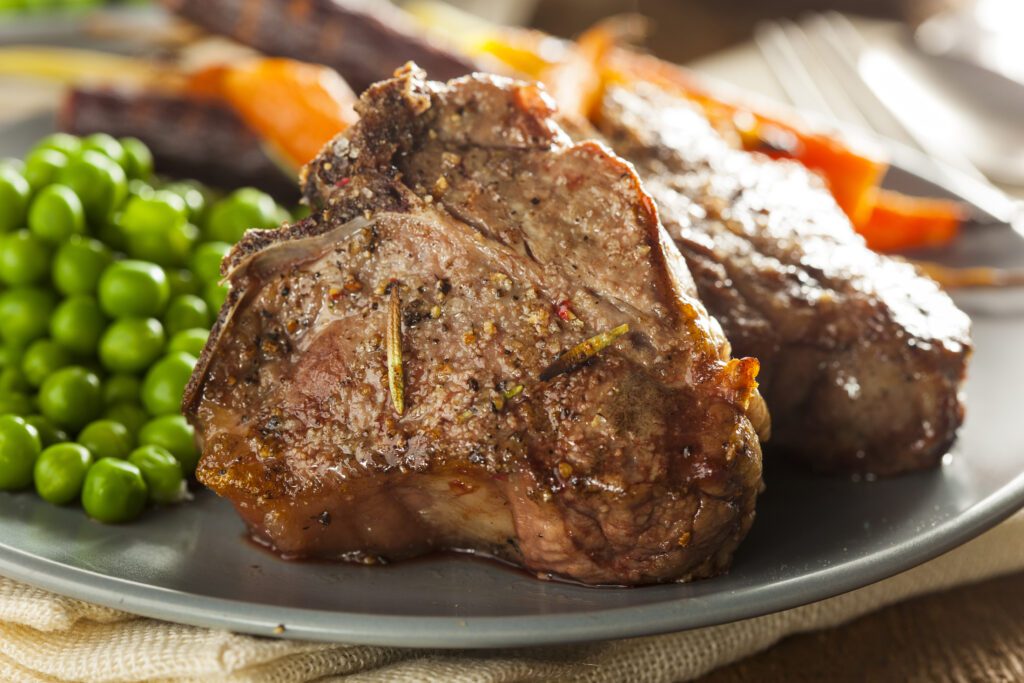
Please aim to eat a total of one twelfth (1/12) of your daily diet as protein. Try to eat 110g-140g of high quality animal protein daily. Please also eat either sardines or eggs for your other protein meal. This would be less for children depending on their age. Most of the protein you enjoy should be from an animal source such as lamb, beef, chicken, turkey, soft-cooked eggs and preferably raw dairy products such as cheese and yoghurt. Eat some flesh protein daily (lamb, chicken, beef, turkey). Only eat one kind of protein with each meal. This helps with your digestion.
Lamb
Fast oxidisers should try and eat lamb once to twice per week. It is a rich source of many nutrients including Omega 3s. Non organic lamb is not too bad, although organic is better. Eat other meats organically if at all possible especially chicken and turkey, and then second priority is beef.
Fish
Sardines are an excellent food. They are a rich source of omega-3 fatty acids, vitamin D, calcium, RNA and DNA, and the nerves and skin are full of goodness too. Also, they are so small that mercury does not accumulate in them to any great extent. If you eat 3-4 cans of sardines weekly, no additional supplemental omega-3 fatty acids or Vitamin D should be needed. Fast oxidisers should aim to eat a can of sardines every second day for adults. Avoid all other fish or shellfish as most seafood is highly contaminated with mercury and other toxic metals.

Poultry
Naturally raised, organic and free range chicken, turkey and duck is so good for you! Aim for about 3-4 meals a week of poultry. Turkey or beef jerky are also okay for snack food if it is not laced with chemicals.
Raw dairy
Most people benefit from including raw goat milk, raw goat cheese, or raw goat yoghurt in their slow oxidiser diet. Cow’s dairy is not quite as good although raw cream, butter and full fat yoghurt are excellent. You may also have some raw kefir. If you cannot find raw dairy, organic dairy products are the next best. Avoid most commercial dairy products. Enjoy about 115ml of raw dairy daily if you want, this is not essential. To read more about Raw Dairy please read this article.
Eggs
Eating eggs with the yolks runny and the white semi-solid enables the best utilisation of nutrients whilst still ensuring safety. Good methods of preparation are soft-boiled for about 3-4 minutes (the best), poached, or lightly fried with the yolk runny. To read more about Eggs please read this article.
Men can eat up to 8 per week and women up to 6 per week. Eating more here and there won’t hurt either. Eating eggs every second day works well.
Bone broth
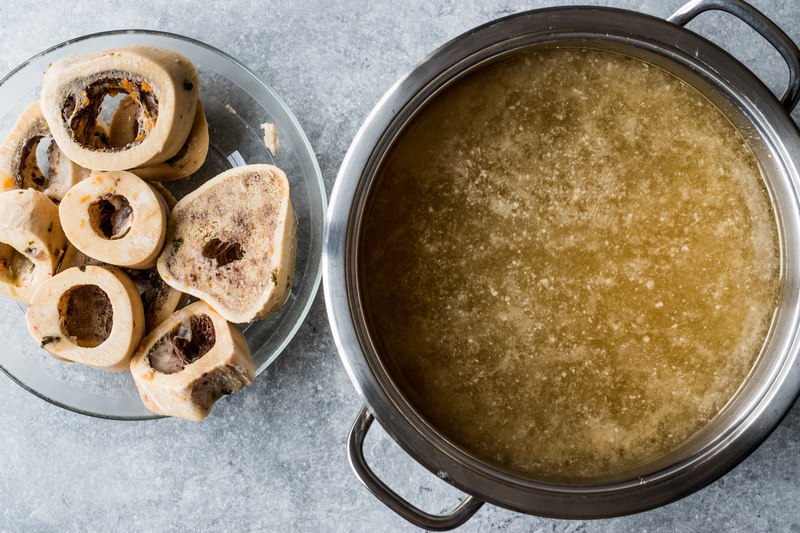
This is an optional extra. It certainly packs a big nutritional punch, so if you can make it then it will certainly benefit you. Make this by cooking or simmering bones in water, overnight or even for a few days. It is tasty and very good for the bones and to obtain extra minerals. For instructions on making bone broth go here. To read an article about the benefits of bone broth go here.
Nuts and seeds
These should only be eaten if they are fresh, or soaked. They are a yin food and slightly toxic. Nut and seed butters are much more digestible than the whole nuts and seeds, providing they are fresh. Roasted almond butter or tahini is beneficial for many people and may be eaten in moderation. Enjoy a 2 tablespoons of almond butter daily. Enjoy 2 tablespoons of tahini OR 4 tablespoons of humus daily too.
Proteins to enjoy once or twice weekly
- Other small fish such as anchovies and herring
- Beef- almost all is hybridized and many vaccines, antibiotics and other chemicals are given to them.
- Dried beans if they are well cooked. Lentils are among the best. Others include pintos, black beans, split peas, black-eyed peas, kidney beans etc. These food are more yin also and slightly toxic and very starchy.
Proteins to avoid
- Peanuts/ peanut butter: contains aflatoxins which damage your liver.
- Protein powders and drinks- whole foods are recommended, not protein drinks. They are not recommended because they include 1/ horrible food combination, 2/ too much water mixed with the food which impairs digestion, 3/ too yin in Chinese medical terms (raw, broken apart, and liquidly are all yin qualities), 4/ generally contain much less nutrition than the whole food, and 5/ are eaten in a hurry, rather than cooked, eaten warmed and chewed thoroughly for proper absorption.
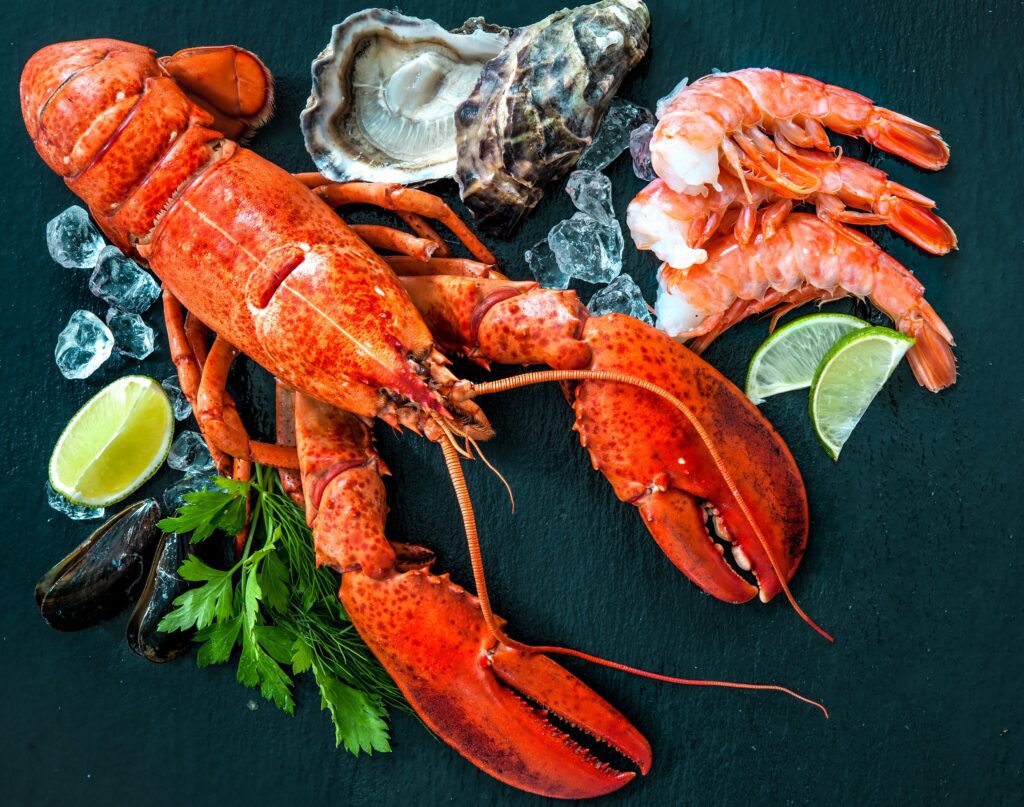
- All fish especially large fish such as tuna, shark, ahi, mahi, halibut, game fish and even salmon except on occasion, are too high in mercury to be eaten.
- All shellfish- too high in toxic metals
- All pork, ham, bacon, pork rinds, pig intestines used in sausage, and other pig products. These often contain parasite eggs, no matter how well cooked they are.
- Most processed meats. These include most hot dogs, bologna, salami, chicken loaf and sausages. Most contain toxic chemical additives and are often not fresh enough. 100% natural processed meats with no additives are okay, though not ideal, but only if made without any pig products. Note that pig intestines are usually used to make all types of sausages, although some organic sausages use lamb intestines.
- Soy products. I recommend avoiding all soy foods. These all are genetically modified today and are lower quality proteins. They have been shown to interfere with thyroid functioning, female fertility and contribute to some cancers. Avoid soy milk, soy protein powders, Textured Vegetable Protein (TVP), tofu, tempeh, and many other products that contain soy.
Vegetarian diets
Vegetarian diets are too yin to enable healing. They are also missing or low in vital nutrients such as zinc, carnitine, taurine, alpha-lipoic acid, some B-complex vitamins in many cases, and others. Cancer patients are the exception- they should avoid all red meats and eggs until they are healing well, mainly due to the higher iron content of these foods.
For much more information on protein, sign up to the Fundamentals Challenge.
3. Fats and oils
High quality fats and oils are so important for your body to function optimally and to heal. You should aim to eat about one sixth (1/6) of your daily diet as fats and oils. This might equate to about two tablespoons of high-quality fats and oils added to each meal daily. This is very important for people who show Fast Oxidisation on their Hair Tissue Mineral Analysis results.
High quality fats and oils include fatty meats such as dark chicken meat, dark turkey, lamb, wild game and fatty cuts of beef. Other good sources include eggs, raw or organic dairy products such as butter, high-fat cheese, whole milk or yoghurt, olive oil, and a little toasted almond butter.
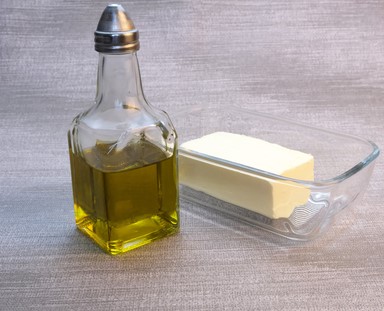
Less recommended are: oils of flaxseed, hemp, sesame, avocado, coconut and other seeds or nuts. These are more yin so best eaten in small amounts only. Also avoid all krill oil, primrose oil, borage oil as they are slightly toxic. Avoid poor quality oils in fast-foods, restaurants deep fried foods, margarine, shortening, bacon, lard and other butter substitutes. Also avoid processed and canned meats that often contain oxidised fats.
Always add any butter, olive oil, cream, or yoghurt to your meal after you have cooked it. This stops the fats going rancid and causing free radicals in your body.
Cholesterol
High cholesterol will normalise on a Nutritional Balancing program in almost all cases without the need for dietary restriction. If you are very afraid of cholesterol, begin with less meat, eggs and butter. Have more olive oil, flaxseed oil and perhaps some roasted almond butter, and a little coconut oil to obtain your fats and oils. Read this article on eggs and cholesterol.
4. Carbohydrates (starches)
Complex, whole carbohydrates should make up about 1/24 of your daily diet. Eat complex carbohydrates such as starchy vegetables and whole grains. Starchy vegetables included: carrots, corn, sweet potatoes, peas, beetroot, and pumpkins. Whole grains include millet, quinoa, brown rice and amaranth. Perhaps enjoy a little oats, rye, barley and kamut if your digestion handles them. Pasta or noodles can be eaten that are made from rice, corn or quinoa and even vegetables.
Avoid all wheat and spelt products and most buckwheat. Wheat is too hybridised today and is or poor quality. It has a lower protein content and a high content of glutamic acid, which irritates the intestines. Some people should avoid all gluten containing grains such as rye, oats, and barley (and wheat) at least until their digestion improves.
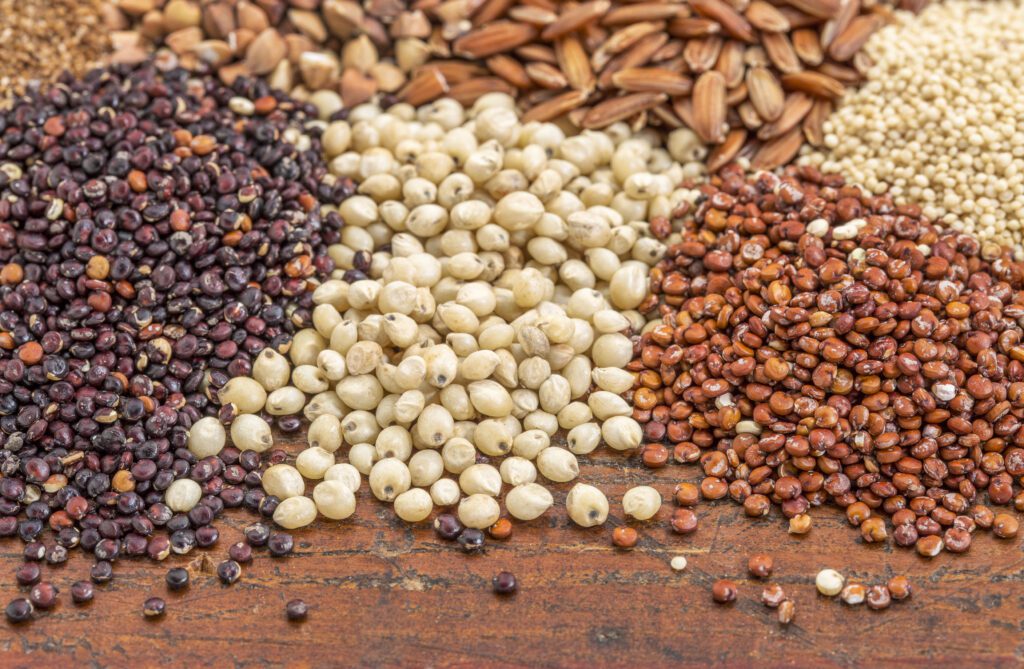
Try to have only one type of complex carbohydrate per meal.
Whole organic blue corn, organic blue corn chips, and or/ blue corn tortillas are excellent. You can enjoy 200 -280 grams of blue corn chips weekly or a few organic blue corn tortillas several times a week. If you do not tolerate blue corn at first then begin with less, as with all foods recommended on this diet. The blue corn is an ancient grain full of antioxidants. Some yellow corn is also ok.
Simple carbohydrates/ sugar
Avoid ALL sugar. Sugar is put in almost all processed packaged foods you buy, including canned foods. Eating a fresh, whole food diet eliminates sugar for the most part. Lollies, refined chips, junk foods, pastries, donuts, slices, cakes etc all contain high amounts of sugar. Do your best to stop eating these terrible foods.
Fruit is also full of sugar and does not contain many vitamins. You can easily get the amount of nutrients in fruit from other foods, without upsetting your blood sugar levels. Keep fruit as your special treat. Berries are good.
Avoid all fruit juices, honey, maple sugar/syrup, agave nectar, and other sugars and all sweets including artificial sweeteners. Do not use Nutrasweet, aspartame, Equal, Splenda, saccharin or other artificial or non-caloric sweeteners. If you must use a sweetener, use a very small amount of stevia.

Weaning yourself off sweets and sweeteners may take some time or efforts, but it is well worth it. Learn to eat food without the need for sweeteners of any kind. Balancing your body chemistry on a Nutritional Balancing program helps lower your sweet cravings. Sari can also prescribe certain minerals like chromium that helps your cravings decrease, making it easier to give it up. You can do it. It is so important for your health, and your future well being that you do this.
For much more information on carbohydrates, and help with eliminating sugar from your diet, sign up to the Fundamentals Challenge.
Beverages/ water
Hands down, the best water to drink is spring water. Build up to drink 3 litres of spring water each day. The second best water option is carbon-only filtered tap water. Do not buy fancy water filters containing KDF media and others. These damage the water. Only use carbon filtration.
The best option is to find a spring nearby where you can fill up your own containers, usually at no charge. If you can’t do this, the next best is to have spring water delivered to your home in recycled plastic containers. Whilst buying spring water in plastic bottles is not ideal, it is a good option. Rain water is good too depending on water pipes and roofing etc.

Avoid reverse osmosis water. This is extremely important. Problems with reverse osmosis water are: 1/ it does not seem to hydrate the body well enough or some reason, 2/ it is very low in minerals which are vital today, 3/ it is too yin in Chinese medical terms, and 4/ it always seems to pick up some plastic residue from the plastic membrane the water is forced through to make it. It is much worse than drinking water from plastic jugs or bottles.
Well water and plain tap water are often contaminated with various chemicals, although in some few areas it is okay.
Avoid alkaline waters as it makes the body too yin, often contains toxins found in tap water, and the water is usually passed over platinum plates, which makes the water even more toxic. Also avoid most ‘designer’ waters, which are often made with reverse osmosis water. For much more information on water sign up to the Fundamentals Challenge.
Do not drink with meals, except enough to take your supplements. Drink one hour or more after meals, and up to 10 minutes before a meal. An excellent idea is to drink about 1 litre of water upon arising, before breakfast. You may drink water while in the sauna too.
Avoid drinking soft drinks, coffee, tea or other beverages. Your main drink should be water. Herbal teas are also okay, but try to have a variety and not just stick to one herb. You may enjoy one coffee or black tea daily if you wish depending on your biochemical patterns on your Hair Tissue Mineral Analysis (HTMA).
Flavourings
Use fresh or dried herbs on your food. This increases the flavour and adds large amounts of vitamins. The best are parsley, rosemary, basil, cilantro/ coriander, thyme, ginger, mustard, turmeric, marjoram and garlic. Eat some daily.
Use sea salt on your food. Natural sea salt is excellent as it still has all the minerals in it. White table salt has had all the minerals removed and is a very bad toxic junk food which also contains aluminium and can raise your blood pressure. Avoid table pepper, which is often rancid and can cause joint problems in some people.
If you don’t like things plain, add butter, cream, salt, garlic, cayenne, mustard powder, tamari sauce, almond sauce (almond butter mixed with a little water), pesto sauce, or chilli sauce. Many more ideas and suggestions are included in the Fundamentals Challenge.
Chemicalised ‘junk’ and ‘fast’ foods
These are of much poorer nutritional quality, in general and are often irritating or toxic for the body. They make up the bulk of most restaurant food, and occupy the middle isles of the supermarkets. They cost more for what you get, and will ruin your health. The most common of these are white flour products such as breads, pastries, donuts, bagels, pretzels, cupcakes, cakes, ice creams (unless very simple with very little sugar or chemicals) and other baked goods. Soft drinks, beer, wine, hard liquors, sweet coffees, sports drinks like Gatorade and Recharge, candy bars, health food bars, chocolates and similar items are all to be avoided if you want to heal your self and reach your optimal productivity and vitality.
Learn more about these and how to avoid them in the Fundamentals Challenge.
Meal planning/ guidlines
- Eat at least three times a day- do not skip meals
- Eat regular, relaxed, sit-down meals.
- If you are hypoglycaemic and must eat often, have four or up to six meals daily.
- Keep meals simple to help digestion.
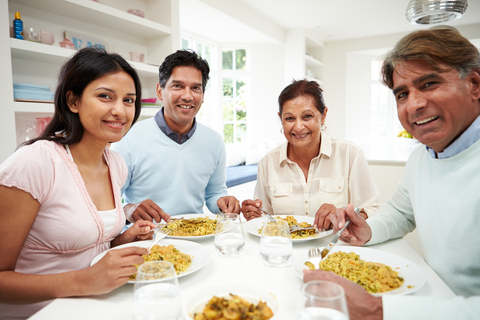
- Food combining: Eat only one type of protein per meal, or one type of complex carbohydrate per meal. Do not combine a heavy protein with a heavy carbohydrate. Have cooked vegetables with each meal, and EITHER a protein OR a carbohydrate.
- Rotate your foods to have some variety in your meals.
- Organically grown, high quality and preferably fresh food is far superior.
- Cook all or almost all of your food. Raw food is no good for slow oxidisers, and most people cannot absorb their minerals nearly as well from raw foods.
- The exception is fats and oils of all kinds which should be eaten as raw as possible. For example, raw dairy products are best.
- Eat slowly, chew thoroughly and always have sit-down, relaxed meals. Do not eat on the run, in your car, standing up or while working. These habits impair digestion and reduce the value of the food.
- Avoid drinking most liquids with meals, as this tends to dilute the digestive juices.
- Chewing each mouthful at least 15-20 times will assure better digestion.
- Eat whole foods. Do not use smoothies, powders or blended meals. If you have trouble chewing or swallowing, cook your food adequately and chew it very thoroughly. Food blended with water dilutes the digestive juices and this is not helpful. For the same reason, do not eat a lot of liquidy soups as they also contain too much water, in most cases, and this tends to dilute the digestive juices. Enjoy your soups thick.
- Keep conversation pleasant during meals. Do not criticise children or discuss very negative topics at meals times. Make your meals a pleasant activity. This helps digestion.
- Stop eating before you feel stuffed full. Also, sit for at least ten minutes after you finish eating, or if possible, take a short nap or siesta after eating especially if you are very ill.
Cooking utensils and methods
- For cooking use stainless steel or glass cookware. Using a food steamer is fabulous for those who want easily prepared, healthful meals.
- Crock pots or slow cookers may be used and are so helpful for making delicious meals whilst you are working. Baking foods is good.
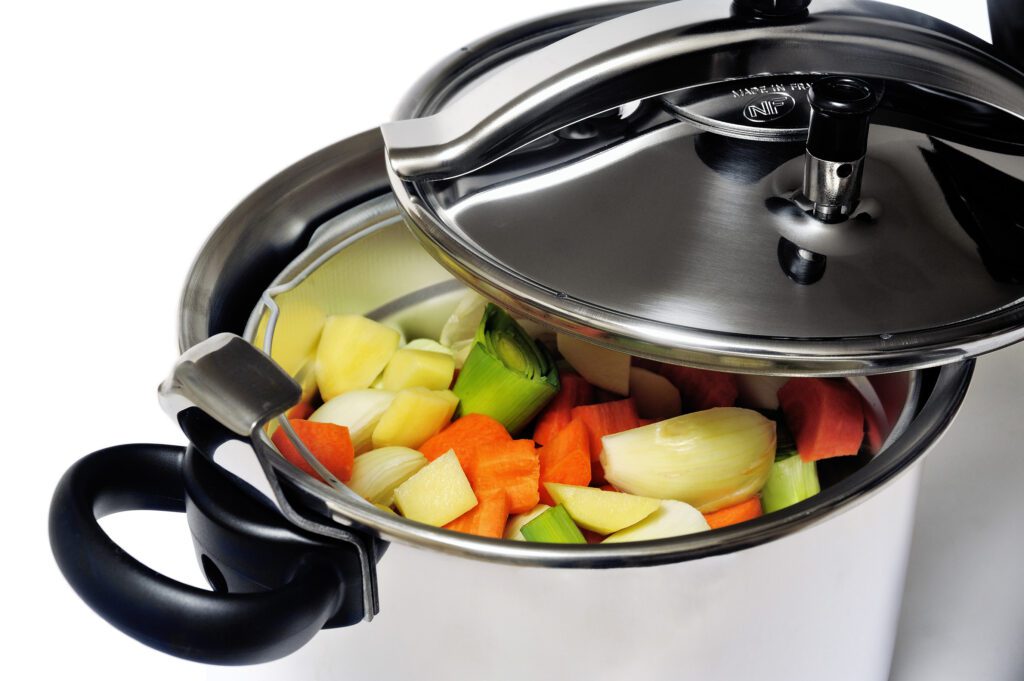
- Frying and barbequing are okay once in a while, but not quite as good due to the high heat and production of harmful chemicals.
- Keep your vegetables in the bottom of the fridge in damp cloth bags to keep them fresh. I use the Swag bags.
- Keep meats in the freezer by dividing meats into meal-sized portions. Then place the fresh meal-sized portion meats into plastic bags and put them in the freezer (you can get cellophane bags too to avoid chemicals). However, try to eat meats quickly, rather than leave them in the freezer for weeks or months. To defrost meats, put frozen meat in your sink in the morning, and let them naturally defrost over the day. They should be ready by dinner time. Alternatively, defrost in the sink over night and they will be ready for the morning.
- Avoid aluminium cookware and microwave ovens. Aluminium leaches into the food from the cookware. Microwave ovens damage food.
- Making the simple effort to nurture yourself by preparing healthy meals is often important for healing and maintaining health.
Snacks
If your blood sugar is unstable, have a snack or preferably a small meal in between your main meals that contains some fat and a little protein. Examples are a soft-boiled egg or two, some raw goat cheese, or two tablespoons or almond butter or tahini on a few rice crackers. If blood sugar is very unstable, you may need five or six small meals daily for a few months or so, until your health improves.
Eating out
Eating in restaurants is not ideal, but a treat once in a while is fine. If you will not cook, then going to quality restaurants and following these instructions above for choosing your food will work okay.
The best restaurants are those that offer plenty of cooked vegetable such as ethnic Chinese, East Indian, and Thai restaurants. Be careful to choose very hygienic restaurants.

Common problems with eating out include: limited food choices, cleanliness and food safety problems, low food quality, hidden chemical additives and noisy or distracting environments that are not ideal for digestion. Mexican restaurants usually serve too many carbohydrates and not nearly enough cooked vegetables. Italian food restaurants offer too much wheat and salads, and not enough cooked vegetables. Avoid standard fast-food restaurants and most chain restaurants. They often cut corners, serve too many chemicals and the overall food quality is poor.
When eating out sit in a quiet area away from noisy tables and blaring television or music. Ask for double or triple orders of cooked vegetables. Most good restaurants will be happy to comply. If bread is served, ask that it be taken away. Bring your supplements along.
Traveling
If possible, bring along cans of sardines, bags of blue corn chips and even an electric food steamer. This appliance is easy to clean, and can cook eggs, vegetables and more. This can save time and money, and help you eat well. Buy fresh produce for each day depending on how much fridge space you have access too. Choose high quality restaurants where possible. For much more about how to travel healthily and safely, read ‘Nutritional Balancing Healthy Holiday Tips.
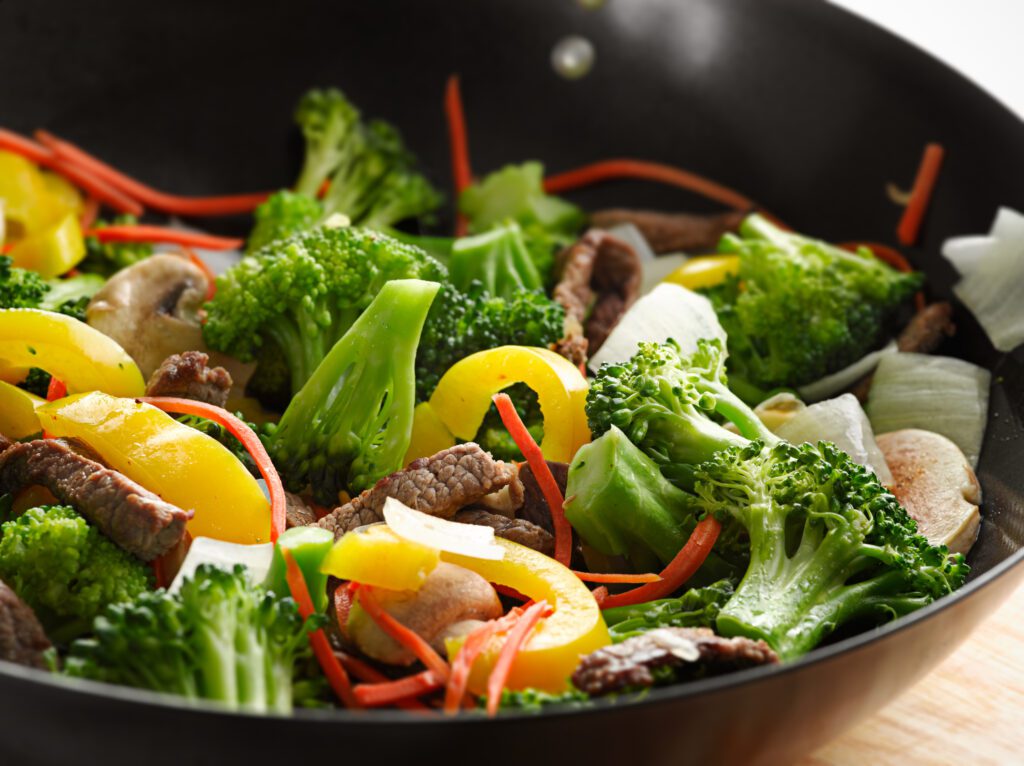
Fast oxidiser diet summary
Eating a Fast Oxidiser diet can be challenging at first, depending on what your diet is like initially. The key to success is making small changes and building momentum as you notice the awesome health benefit you receive as you progress. Eating the correct diet for your Oxidiser type and body chemistry, will go a long way towards balancing your body chemistry so you can heal, increase your sense of calm and contentment and thrive at work and life.
Enrol in the next Fundamentals Challenge for 12 weeks of awesome challenges to help you change your life for the better.
Download your printable PDF version
Please check out the Blog posts for recipes and information articles.
